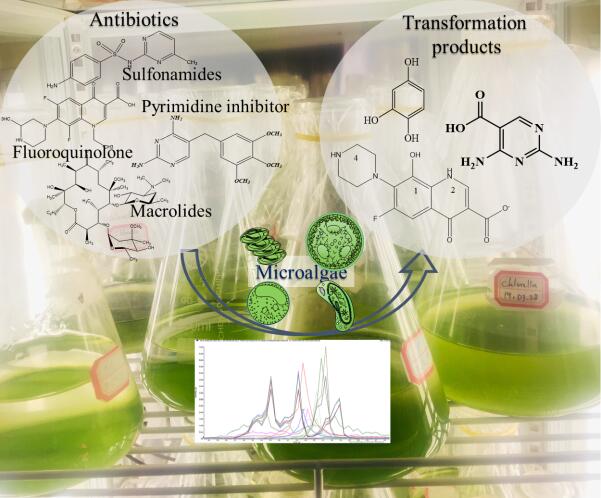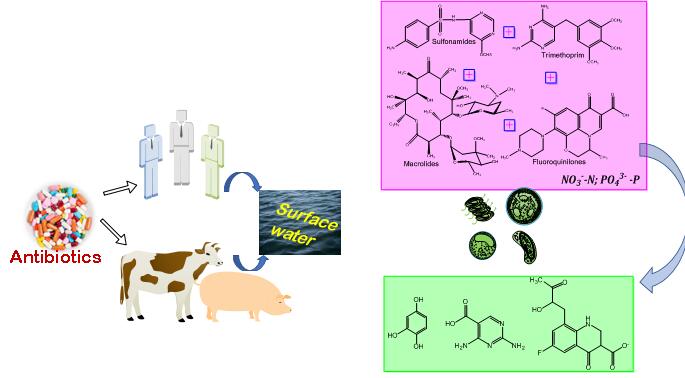Rapid urbanization and industrialization have severely implicated the environmental and human health in various ways including freshwater contamination by wastewater effluents. Over the years, several technological interventions have been made to upscale the capabilities of the wastewater treatment systems (WWTS) to cope up with the evolving wastewater contaminant chemistry on sustainable basis. The existing WWTS employ diverse physical, chemical, and biological processes that have shown limited removal capacities for many organic contaminants, especially, the antibiotic compounds. Occurrence and pseudo-persistence of the antibiotics in various environmental components may result in yet another class of pollutants called antibiotic resistant genes that can also pose serious concerns for human and animal health. The existing biological interventions provide cost-effective, In Situ attenuation of the toxic organic contaminants through oxic and anoxic processes by employing aerobic and anaerobic bacteria. To improve the biological component of existing WWTS, microalgae were exploited for their efficacy to attenuate antibiotics. The microalgae have well demonstrated abilities to utilize organic compounds as nutrients and sunlight to grow as autotrophs.
Prof. SUN Qian, at the Institute of Urban Environment (IUE), Chinese Academy of Sciences (CAS), Xiamen has been focusing on the monitoring and management of emerging contaminants in aquatic environment for many years. She along with KIKI Claude (masters student) and Dr. Azhar Rashid (visiting scientist under PIFI-CAS) conducted a series of studies in batch culture setups to investigate the efficacy of freshwater green microalgae viz. Haematococcus pluvialis, Selenastrum capricornutum, Scenedesmus quadricauda and Chlorella vulgaris for the attenuation of several multi-class antibiotics including the macrolides and fluoroquinolones than sulfonamides. They reported negligible to minor degrees of adsorption and bioaccumulation of antibiotics by the microalgae. Whereas, the microalgae were able to attenuate major portions of antibiotics. The relationship between the algal growth and utilization of antibiotics in batch culture was explained by the Monod kinetics model. Variation in algal-antibiotic affinities were observed, where, Selenastrum capricornutum and Chlorella vulgaris showed more affinity for the macrolides and fluoroquinolones antibiotics than the sulfonamides, while, Haematococcus pluvialis and Scenedesmus quadricauda showed relatively higher preference for sulfonamides than the other antibiotic groups. The environmental and health safety of the biodegradation processes by microalgae was evaluated by the identification and toxicity assessment of the transformation products from different antibiotics. A total of 10 transformation products and their transformation pathways were identified that demonstrated lower toxicity compared with their parent antibiotic compounds.
The team concluded that microalgae-based technology has the potential for incorporation in the existing WWTS for antibiotic removal. The outcomes of this work were published as “Dissipation of Antibiotics by Microalgae?: Kinetics , Identification of Transformation Products and Pathways” inJournal of Hazardous Materials. The work was jointly funded by the Key projects for Inter-governmental Cooperation in Science, Technology and Innovation, Distinguished Young Scholars of Fujian Province of Natural Science Foundation of Fujian Province, Science and Technology Planning Project of Xiamen and Water Environment Safety and Water Quality Assurance Center of Xiamen.

